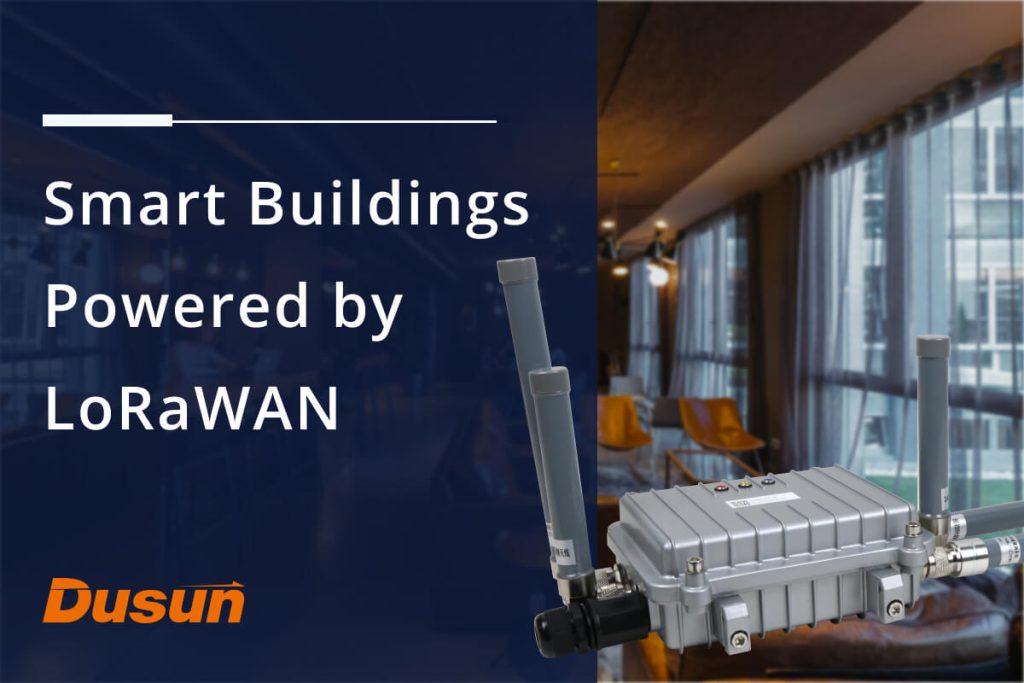This article explains the basic concepts of LoRaWAN utilization in smart buildings. It also highlights the practical use cases of LoRaWAN in smart buildings and guides the reader on deploying it in existing building management systems.
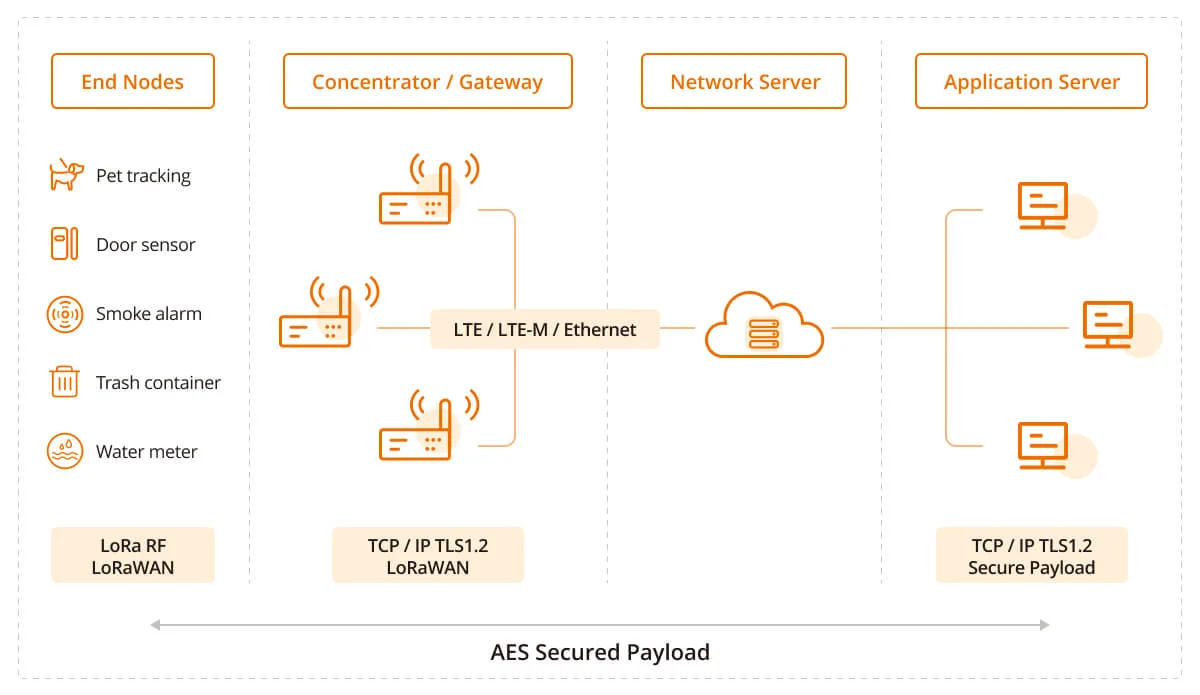
What is Smart Building Using IoT?
A smart building automation solution utilizes Internet of Things (IoT) technology to go beyond traditional building automation systems, connecting various operations like security, lighting, and HVAC through IoT devices. These IoT devices, such as smart sensors and management systems, are linked to the internet and controlled via apps.
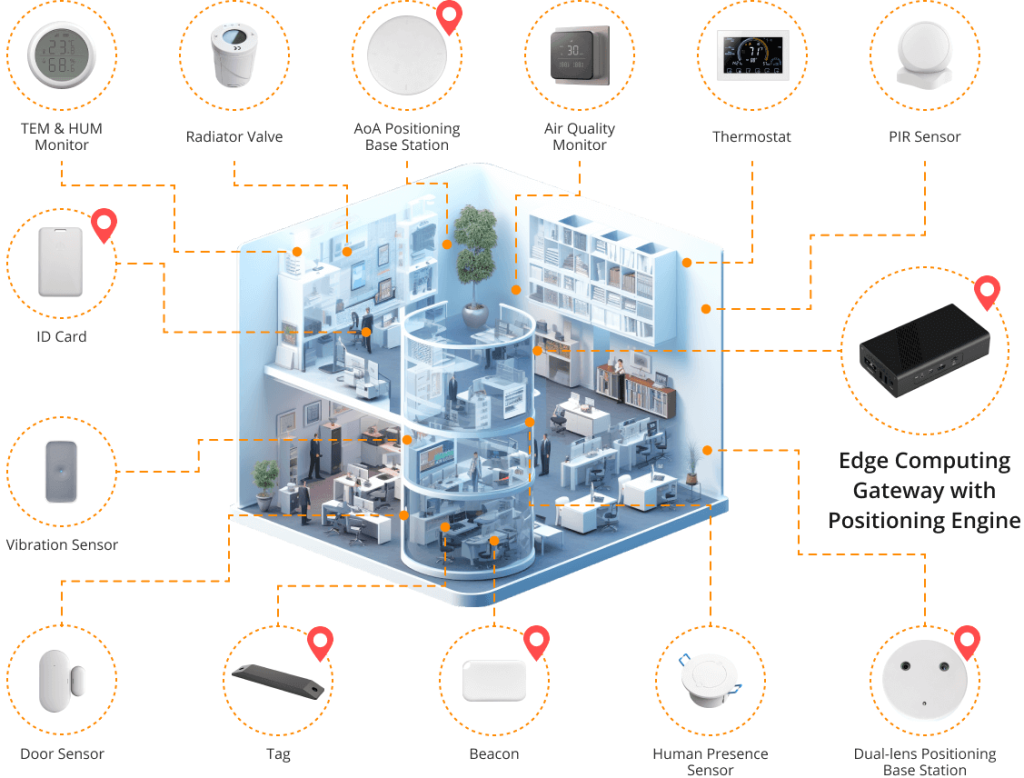
Smart building system gather data from these devices to analyze usage patterns, enabling efficient resource utilization and optimizing the building’s environment. They offer actionable insights for improved management and comfort, and the goal is to lower costs, enhance occupant comfort, automate energy management, monitor assets, and meet sustainability standards. Smart buildings span various settings, from homes to offices, and represent a convergence of technology and sustainability practices.
Read further: what is an IoT solution?
How LoRaWAN Enables Smart Building Solutions?
LoRaWAN technology is an effective IoT technology for smart building solutions, benefiting homeowners, property managers, and commercial real estate (CRE) companies. It enables smart building solutions for new and retrofit projects by offering advantages, including easy deployment, indoor coverage, and low power use. Swift setup and extended device battery life are vital for ROI.
This accommodates various applications, from smart HVAC control to waste management. Though LoRaWAN offers lower data speed than 5G, it still suits most smart building needs, transmitting modest data packets. Its energy efficiency means longer device life, reducing costs.
Read further: what is LoRaWAN gateway?
The synergy between LoRaWAN and Wi-Fi is compelling. Wi-Fi addresses high bandwidth demands, while LoRaWAN’s range and efficiency complement it. In this setup, LoRaWAN manages building-wide networking, and Wi-Fi takes charge of bandwidth-intensive functions like video streaming.

Uses Examples of LoRaWAN-based Smart Building
LoRaWAN-based Smart Building solutions offer diverse applications that enhance efficiency, comfort, and sustainability. Here are some practical use examples:
Smart Apartment Utility Metering
Smart Apartment Utility Metering powered by LoRaWAN technology revolutionizes utilities management like water and electricity. Real-time data transmission eliminates manual readings, ensuring precise billing and enabling leak detection. Residents access consumption insights via user-friendly apps, enhancing conservation efforts. Utility companies benefit from streamlined operations and improved accuracy. This smart solution fosters efficient resource management and contributes to sustainability goals, helping residents and the environment.
Know more about IoT in smart metering
Indoor Air & Environment Quality Sensors
Indoor Air & Environment Quality (IAQ & IEQ) has gained attention due to stricter standards, with people spending 90% of their time indoors. Poor IAQ & IEQ affects vulnerable groups. COVID-19 emphasizes IAQ’s importance, reducing viral spread in schools, offices, and restaurants.
LoRaWAN-powered IAQ & IEQ monitoring offers real-time tracking of pollutants, temperature, humidity, and CO2 levels, enabling optimization for healthier environments. Integrating LoRa devices into sensors allows communication through protocols like BACnet and Modbus. A typical environment quality monitoring setup installation involves an IoT platform on-premises, 20-30 LoRaWAN gateways, and 700-1000 sensors for a 30-50 floor building.
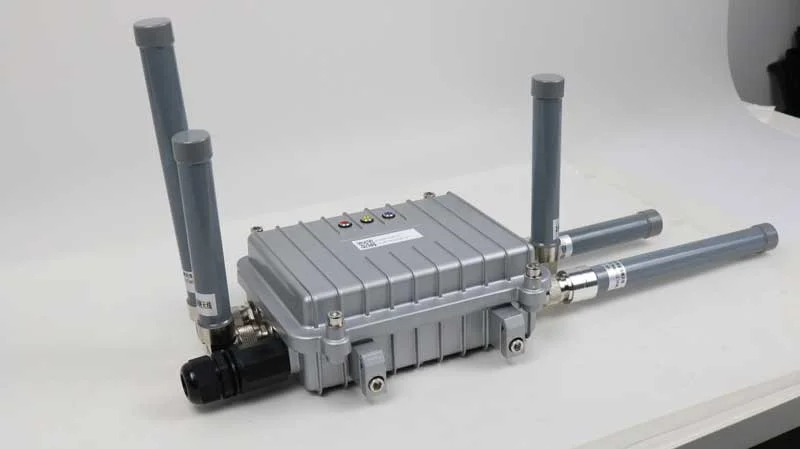
Read further:
what is Modbus protocol converter?
Quality measuring sensors send alerts and feature LEDs for network status and IAQ/IEQ indication. Battery-saving features include LED deactivation, and data transmitted individually or in batch mode after short intervals, thus extending the battery life to 3 years.
Gas Leak Prevention
LoRaWAN connectivity for gas sensors is a strategic response to environmental and economic gas leak risks. With LoRaWAN’s low-power, long-distance capabilities, instant alerts enhance safety and prevent hazards near gas meters. Modern, calibration-free sensors suit residential and industrial settings, effectively reducing gas leaks. These advanced detectors selectively monitor harmful gases, ensuring prompt actions for safety in commercial and industrial spaces. Natural gas utilities are improving safety by integrating valve shut-off capabilities. A comprehensive Smart Shutoff Safety System includes smart sensors, shutoff valves, IoT gateways, and user-friendly software. This proactive approach aligns with IoT trends for enhanced citizen well-being. It offers benefits such as fire prevention, equipment reliability, real-time alerts, autonomous detection, cost-effectiveness, worker health, and industrial compliance.
Real-Time Fire Detection
When a fire hazard occurs, the time between detection and reaction is critical to prevent human injury and property damage. LoRa devices are preferred for smart fire prevention systems to notify the building manager of the fire emergency and respond immediately.
Utilizing LoRa Technology, real-time fire detection systems have revolutionized safety measures. LoRa-enabled sensors collect heat, smoke, and gas data in rooms, transmitting it to IoT gateways. These gateways connect to network servers for analysis and triggering automatic responses. Modern fire prevention systems integrate LoRa devices, offering real-time analytics and geolocation. LoRaWAN gateways on each floor and room sensors swiftly transmit fire data via LoRa for immediate response. Through mobile or computer alerts, LoRa devices enable rapid notification to building managers, emergency personnel, and property managers. This safeguards commercial properties like shopping malls, detecting flames, smoke, and temperature changes.
Building Security
LoRaWAN-powered solutions revolutionize building security through various applications. Intruder detection systems leverage sensors to notify property owners or authorities of unauthorized access instantly. Access control systems restrict entry to private areas, enhancing privacy and security. Video surveillance systems provide real-time monitoring and recording for comprehensive security management. In disaster response, LoRaWAN enables early detection of smoke, fire, or gas leaks, triggering immediate alerts and ensuring swift action. The technology provides robust communication for panic buttons, enabling rapid emergency responses.
explore: smart apartment and home security kit
Failure Prediction
LoRaWAN-connected sensors are crucial in predictive maintenance, significantly reducing maintenance costs. By employing predictive analytics and on-demand services, various systems can be monitored. Water leakage can be detected in real-time, allowing timely interventions to prevent damage. Elevator motors can be monitored continuously to identify early signs of potential failure, enabling proactive maintenance and minimizing downtime.
Read further: IoT elevator predictive maintenance
Space Optimization
Real-time data from LoRaWAN-enabled occupancy sensors, geolocation trackers, and foot traffic counters facilitate efficient space utilization. Businesses can optimize their space layout by analyzing occupancy patterns and movement trends. Offices, retail locations, and public spaces can be reconfigured based on usage, enhancing user experience and resource allocation. This data-driven approach maximizes space utilization, improves workflow, and enhances operational efficiency.
LoRaWAN Smart Building IoT Solutions
In a smart building using LoRaWAN, specialized sensors strategically placed throughout the facility gather real-time data on temperature, occupancy, energy usage, and air quality. These sensors wirelessly transmit the data to LoRaWAN IoT gateways, which act as communication hubs, extending the range and accumulating data. The central server processes the collected information, applying algorithms to extract meaningful insights about building performance and trends. Users access these insights through an intuitive software platform, enabling remote monitoring and control systems like HVAC and IoT lighting.
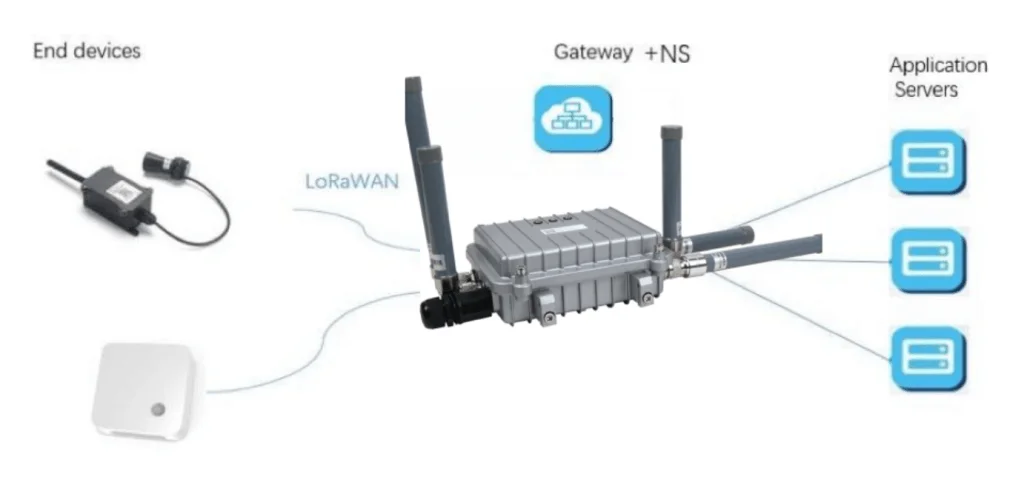
The system optimizes energy usage by adjusting settings based on occupancy patterns, enhances security through real-time alerts, and supports efficient maintenance scheduling. As building needs evolve, the scalable nature of the solution allows for seamless expansion and adaptation. This collaboration of LoRaWAN technology with smart building systems creates a dynamic, data-driven environment that enhances comfort, efficiency, and sustainability.
How to Deploy LoRaWAN into Your BMS system?
LoRaWAN enhances the traditional Building Management System (BMS) by providing flexible, cost-effective, and wireless sensor integration. It complements BMS, enabling data collection from diverse sources and enhancing building management capabilities.
BACnet/BACS(Building Automation and Control System) over LoRaWAN
Integrating BACnet/BACS (Building Automation and Control System) with LoRaWAN presents an innovative approach to address the challenges that BACnet’s traditional hard-wired communication poses. BACnet has long been the backbone of building management, defining HVAC, elevators, fire safety, and lighting protocols. However, its hard-wired nature entails higher construction costs and limited adaptability.
Unlike BACnet’s constraints, LoRaWAN introduces a new era of wireless, long-range, battery-powered sensors. In a world responding to dynamic requirements like those triggered by the Covid-19 crisis, where spaces evolve rapidly, the demand for adaptable building management systems becomes paramount.
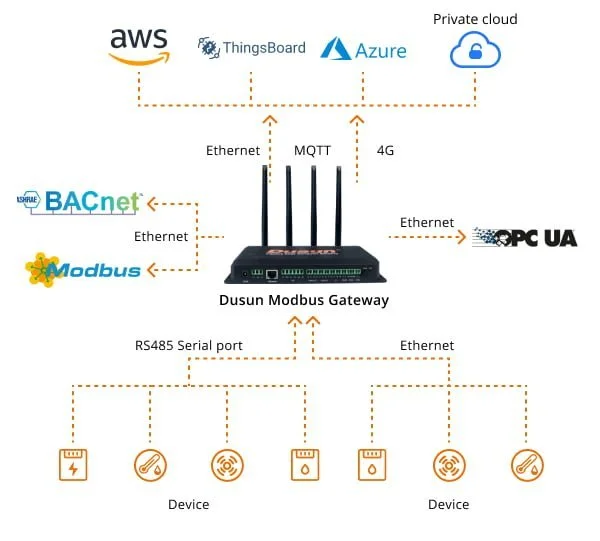
LoRaWAN is not a replacement for BACnet but rather an extension of its capabilities. As the legacy BACS faces limitations, a fresh layer of building control technology is essential to augment BACnet’s capabilities. LoRaWAN acts as this catalyst, expanding BACnet’s functionality with the flexibility and cost-effectiveness required to accommodate rapid structural changes.
Complementary Networks and BMS Integration
Complementary Networks and BMS Integration involve combining LoRaWAN technology with your existing Building Management System (BMS) to enhance functionality and efficiency. Here’s a concise overview of the process:
- Assessment and Planning: Evaluate your current BMS to identify areas that can benefit from LoRaWAN integration.
- LoRaWAN Network Setup: Deploy LoRaWAN gateways strategically to establish a dedicated complementary network. Install LoRaWAN-enabled sensors and devices in areas of interest to gather relevant data.
- Data Translation and Integration: Develop a dedicated server or software layer that translates LoRaWAN data into a format compatible with your BMS (e.g., BACnet). Integrate the decoded data into your BMS, allowing communication between LoRaWAN devices and the BMS.
- Data Analysis and Visualization: Utilize the integrated data within your BMS to perform advanced analytics and gain insights into building performance.
- Testing and Optimization: Thoroughly test the integration to ensure data accuracy, reliable communication, and proper functionality. Optimize system settings to achieve best performance and responsiveness.
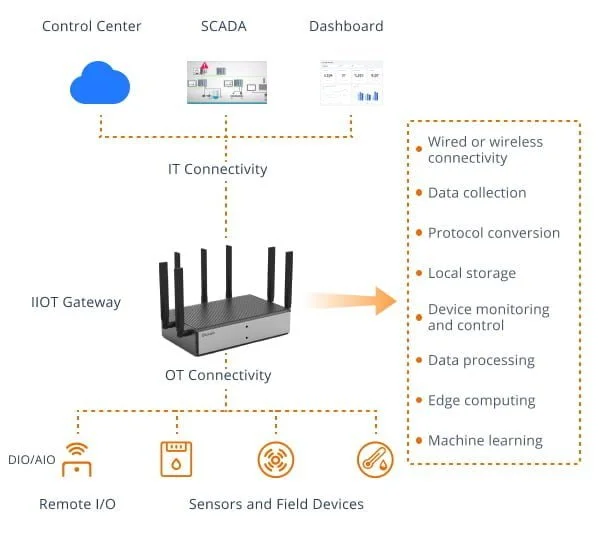
By following these steps, you can successfully integrate complementary LoRaWAN networks with your BMS, leveraging the benefits of both technologies to create a more efficient and responsive building management system.
Cloud Integration
Cloud Integration in building management involves connecting your BMS to cloud-based platforms and services to enhance data storage, analysis, and remote access. Here’s a brief guide to cloud integration for BMS:
- Choose a suitable cloud platform or service provider that aligns with your organization’s requirements and BMS capabilities.
- Configure IoT devices, sensors, and gateways to transmit data securely to the cloud platform using protocols like MQTT or HTTP.
- Set up cloud-based storage to securely store the incoming BMS data. Organize and structure the data to facilitate easy retrieval and analysis.
- Utilize cloud-based analytics tools to process and analyze the collected data. Generate insights, trends, and reports to optimize building performance, energy usage, and maintenance.
- Enable remote access to your BMS through the cloud platform, allowing authorized users to monitor and control building systems from anywhere. Implement user authentication and access controls to ensure security.
- Configure automated alerts and notifications based on predefined thresholds or anomalies detected in the data. Receive real-time alerts via email, SMS, or push notifications to address issues promptly.
FAQs of LoRaWAN -based Smart Building
What is IoT in smart buildings?
IoT in smart buildings refers to integrating interconnected devices, sensors, and systems within a building’s infrastructure to enable real-time data collection, analysis, and automation. This interconnected network allows for intelligent monitoring, control, and optimization of various building functions such as lighting, HVAC, security, and energy management.
Can LoRaWAN be used for the Internet?
LoRaWAN is designed for long-range, low-power communication between devices and gateways, making it suitable for connecting IoT devices and sensors over wide geographic areas. While LoRaWAN enables IoT connectivity, it is not designed to directly access the broader Internet like traditional broadband or cellular networks. Instead, it acts as a communication bridge between IoT devices and application servers, allowing them to transmit data to and receive commands from cloud-based platforms.
What is the difference between LoRa and LoRaWAN?
LoRa refers to physical modulation and wireless communication technology for IoT devices whereas LoRaWAN is a communication protocol and network architecture built on top of LoRa technology. LoRaWAN defines how devices communicate with IoT gateways and application servers.









